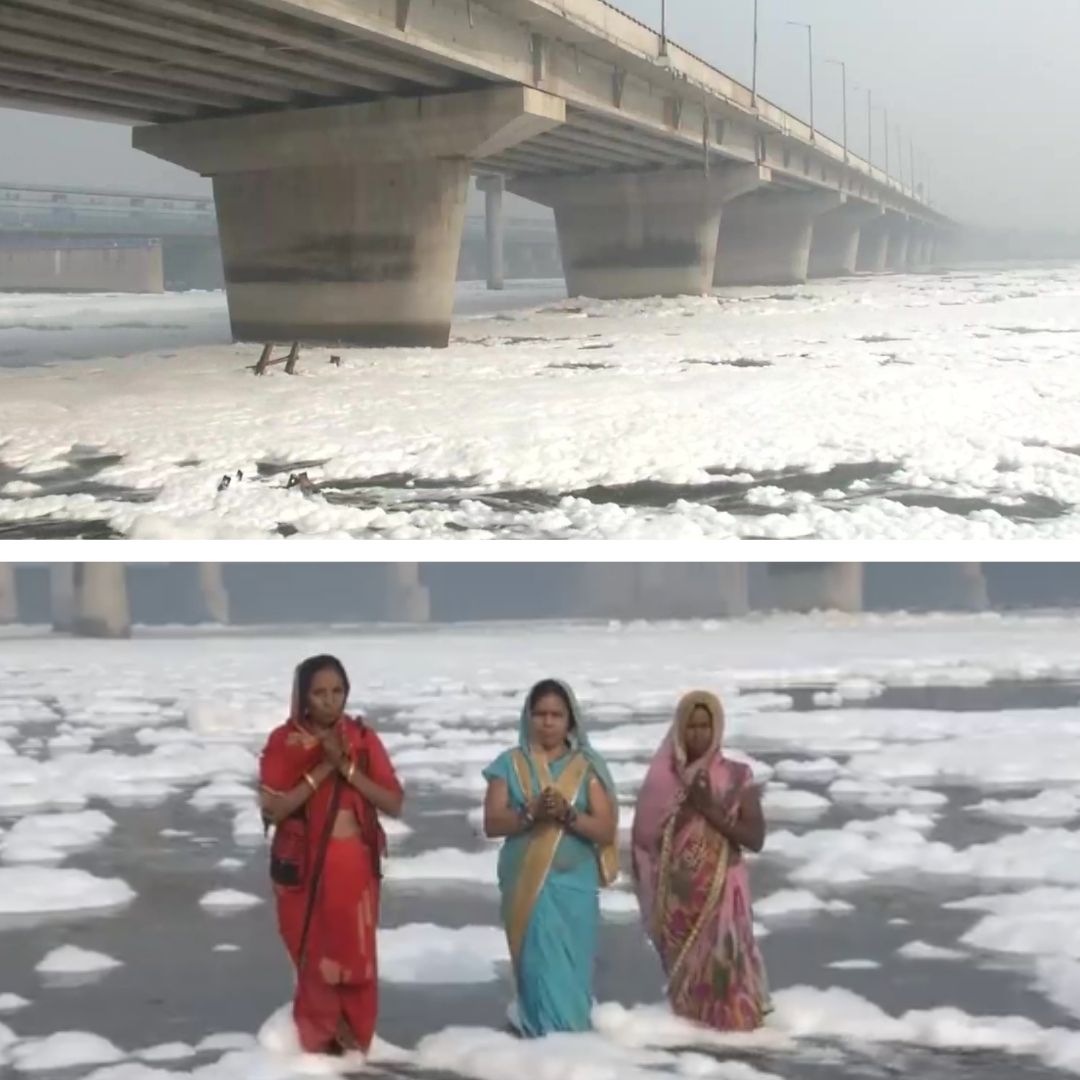
Image Credit: ANI/ Twitter
Toxic Froth Of Yamuna River: The Impending Disaster On Environment And Humans
Writer: Ratika Rana
Her primary objective is to inform, promote, educate and cultivate readers through writing.
Delhi, 9 Nov 2021 12:22 PM GMT
Editor : Ankita Singh |
A literature lover who likes delving deeper into a wide range of societal issues and expresses her opinions about the same. Keeps looking for best-read recommendations while enjoying her coffee and tea.
Creatives : Ratika Rana
Her primary objective is to inform, promote, educate and cultivate readers through writing.
The formation of toxic froth on the Yamuna River is a threat to the locals, and unfortunately a common occurrence in recent years. The 'holy' river water was barely visible as women performed rituals for the Chhath Puja.
The toxic froth on the Yamuna is repeatedly leaving the residents from Capital, and several environmentalists are worried sick. Lately, images of women praying in the toxic froth of the 'holy river' of Yamuna made headlines yet again. The Delhi Jal Board has previously claimed that untreated sewage waste that enters the river waters from the neighbouring states of Haryana and Uttar Pradesh. On several occasions cause an increase in ammonia levels of the river water and affects the drinking water supply in India's national Capital. In October, the Delhi government had prepared a nine-point action plan to prevent the toxic froth formation on the river waters due to sewage water discharge.
Why Does The Toxic Froth Form?
The Yamuna is not the only river on which the phenomenon takes place. Froth forms on several lakes and streams across the country. Organic matter produces foam bubbles while decomposing. While one end of these foam producing molecules repels the water, the other end attracts it, and they work to lessen the surface tension on the surface level of the water. Since the foam bubbles are lighter than water, they float on the surface, as a thin foam film gradually accumulates.
Experts believe that untreated sewage waste from Uttar Pradesh, Haryana and Delhi is one of the most prominent reasons for froth formation. The presence of phosphates and surfactants from the sewage waste form only 1 per cent of the sewage water, and the remaining 99 per cent is air and water itself. Hindustan Times quoted AAP Leader and Delhi Jal Board Vice Chairman saying the waste material falls from a height at the Okhla Bridge, which leads to the formation of the foam.
In several instances, the untreated sewage waste carries particles of soap and detergent. Industrial effluents, organic matter from decomposing vegetation, and the presence of filamentous bacteria form other foam particles. The residue from the sugar and paper industries in Uttar Pradesh also enters the river's water channels through Hindon Canal.
Health Hazards of The Toxic Foam
There are short-term and long-lasting effects of exposure to toxic river water. On a short-term basis, people exposed to the foam can experience skin irritation and allergies. If the foam is ingested, one could fall prey to several gastrointestinal problems and diseases like typhoid. Long term exposure to heavy metals in industrial pollutants could lead to neurological issues and hormonal imbalances.
Cause Of Political Tussle
The formation of the toxic froth on the Yamuna has often been the reason for the war of words between political parties. Raghav Chaddha said that while the Delhi government has been doing its bit to upgrade its sewage treatment plants, according to the Delhi Pollution Control Committee (DPCC), Uttar Pradesh and Haryana release 155 million gallons of untreated waste in the waters of the river. On the other hand, Manoj Tiwari, an MP from BJP in Delhi, rode a boat in the river and alleged that the AAP government did not allow Chhath Puja on the banks of the Yamuna because it wanted to cover up the frothing in the river, that is caused by heavy pollution in the river.
Also Read: Meet The 17-Year-Old, Ananya Kamboj, India's Goodwill Ambassador To BRICS
 All section
All section














